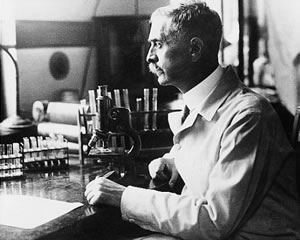Science of Conflict
Medicine-blood transfusion
|
| The First World
War is considered by some to be the war that bridged ancient warfare with
modern day warfare. Battles such as Ypres, Somme and Flanders resembled
ancient battle tactics but this time the technology to slaughter thousands
every second was more developed. Men were ordered over the trenches only
to be cut down by modern instruments of war such as the machine
gun, artillery, land mines and even poison
gas. Such sophistication in deadly weaponry presented the surgeon with
new and daunting challenges. Anti-personnel mines were increasingly used
during WW2 and later wars designed to inflict as much damage without causing
death. |
|
Blood loss is a major problem
confronted by surgeons on the battlefield. Attempts to pass blood from a
healthy soldier to one dyeing of blood loss on the operating table was made
by a British doctor in 1818. Many unsuccessful attempts were made since
then. The reason for such wholesale failure is clear to modern eyes but
the complexity of blood and its composition was not to be discovered until
1900.
In 1900 Karl Landsteiner, pictured on the right, reported a series of tests,
which identified the ABO Blood Group System. In 1910 he won the Nobel prize
for medicine for this discovery. He mixed the serum and cells of all the
researchers in his lab and found four different patterns of clotting. From
those studies he developed what we now know as Landsteiner's
rules for the ABO Blood Group. |
|
|

